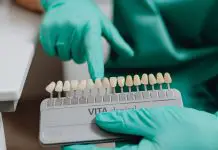Overview, Causes, & Risk Factors
Chronic renal failure, called CRF, is a disease in which the kidneysgradually stop working. As a rule, this process takes place over a period of a few years.
What is going on in the body?
In a healthy body, the kidneys filter waste and other impurities from theblood. These wastes are then excreted from the body in the urine. In people with CRF,toxins that the kidneys fail to get rid of build up slowly in the body. Two of the mostcommon toxins are urea, a nitrogen waste product, and creatinine. The amount oftoxins that remains in the blood is a rough measure of how well the kidneys are workingat any given time.
What are the causes and risks of the disease?
A primary kidney disease may cause CRF. But it may also be due toother diseases that affect kidneys, such as diabetesor high blood pressure.Other common causes include:
glomerulonephritis,the swelling of the glomerulus, which is a part of the kidney made up of blood vesselsand nerve fibers
interstitial disease, a disease within the cell walls of the kidney
multiple myeloma,which is also known as a cancer of the bone marrow
obstructive uropathy, a condition in which the flow of urine is blocked
polycystic kidneys,a condition in which the kidneys become enlarged and grow cysts
systemic lupus erythematosus,a long-term disease that affects many parts of the body, including the kidneys
Everyone is at risk for chronic renal failure as they age. But some peopleare at greater risk, such as:
African Americans
males
those who have a family history of the disease
Symptoms & Signs
What are the signs and symptoms of the disease?
Azotemia is a form of CRF where the buildup of toxins causes nosymptoms. Uremia is another form of CRF where the stored toxins do causesymptoms. These symptoms may include:
breathlessness
changes in the amount of urine output
fatigue
frequent hiccups
generalized swelling
itching
leg cramps
mental slowness or confusion
metallic taste
pale skin color, called pallor
poor appetite
nausea
sudden, uncontrollable body spasms, called seizures
vomiting
weight loss
Diagnosis & Tests
How is the disease diagnosed?
Although chronic renal failure usually has no symptoms, a physicalexamination by a doctor can be helpful. Since many diseases lead to chronic renalfailure, the path to diagnosis can vary. There are a few common abnormalitiesassociated with this condition.
A urinalysis may show protein, red blood cells, or different types of casts, whichare structures made when minerals collect on the walls of the kidneys.
A blood sample may show elevated creatinine and urea nitrogen, which are bothtoxins.
Levels of erythropoietin, a hormone produced by the kidneys, may be low.
Levels of serum potassium, phosphorus, parathyroid hormone, magnesium, andcalcium may be high.
Malnourishmentcan result.
Kidneys may be small and scarred.
If the underlying kidney disease causing CRF is unclear, the doctor maydecide to do a kidney biopsy.
Prevention & Expectations
What can be done to prevent the disease?
Very little can be done to prevent chronic renal failure, other thanpreventing the underlying disease that causes it. But the best ways to slow theprogression of this disease are:
to control blood pressure using ACE inhibitor medicine that reduces the proteinoverflow in urine
to keep blood glucose in a healthy range if a person has diabetes
What are the long-term effects of the disease?
The long-term effects include:
calcium and phosphorus abnormalities, which may lead to many kinds of bonediseases
electrolyte disturbances, especially with potassium. Electrolytes arecompounds or elements that the body needs in order to function.
generalized swelling due to the body’s inability to get rid of extra fluids
high blood pressure
inability to get rid of the acids produced from protein digestion
increased susceptibility to infections
irregular periods and decreased sex drive
low levels of hemoglobin, called anemia
malnutrition
progression or development of heart disease
progression to end-stage renal disease
Treatment & Monitoring
What are the treatments for the disease?
Treatment of CRF includes the following actions:
controlling fluids using diuretics, called water pills, such asfurosemide
controlling high blood pressure using medicines that treat the underlying causes
eating a protein-, potassium-, and phosphorus-restricted diet
hemodialysis, a process in which a machine filters wastes or impurities from the blood
limiting fluids
kidney transplantation,where a healthy kidney from another person is used to replace a diseased kidney
peritoneal dialysis, a filtering procedure that corrects the balance of electrolytesin the blood
using bicarbonate to improve acid-base status
using erythropoietininjections to improve anemia
using phosphate binders, such as calcium carbonate,to decrease absorption of phosphate
What happens after treatment for the disease?
Most cases of CRF progress to end-stage renal disease. Most people who havethis condition will eventually need dialysis or a kidney transplant to treat the symptomsof end-stage renal disease.
How is the disease monitored?
A doctor will usually monitor a person for symptoms of complete kidneyfailure. Once these symptoms appear, dialysis is a next step. The doctor mayalso keep a watch on kidney function with repeated blood samples and 24-hour urinecollection. Be sure to report any new or worsening symptoms to the doctor.
Article type: xmedgeneral













































